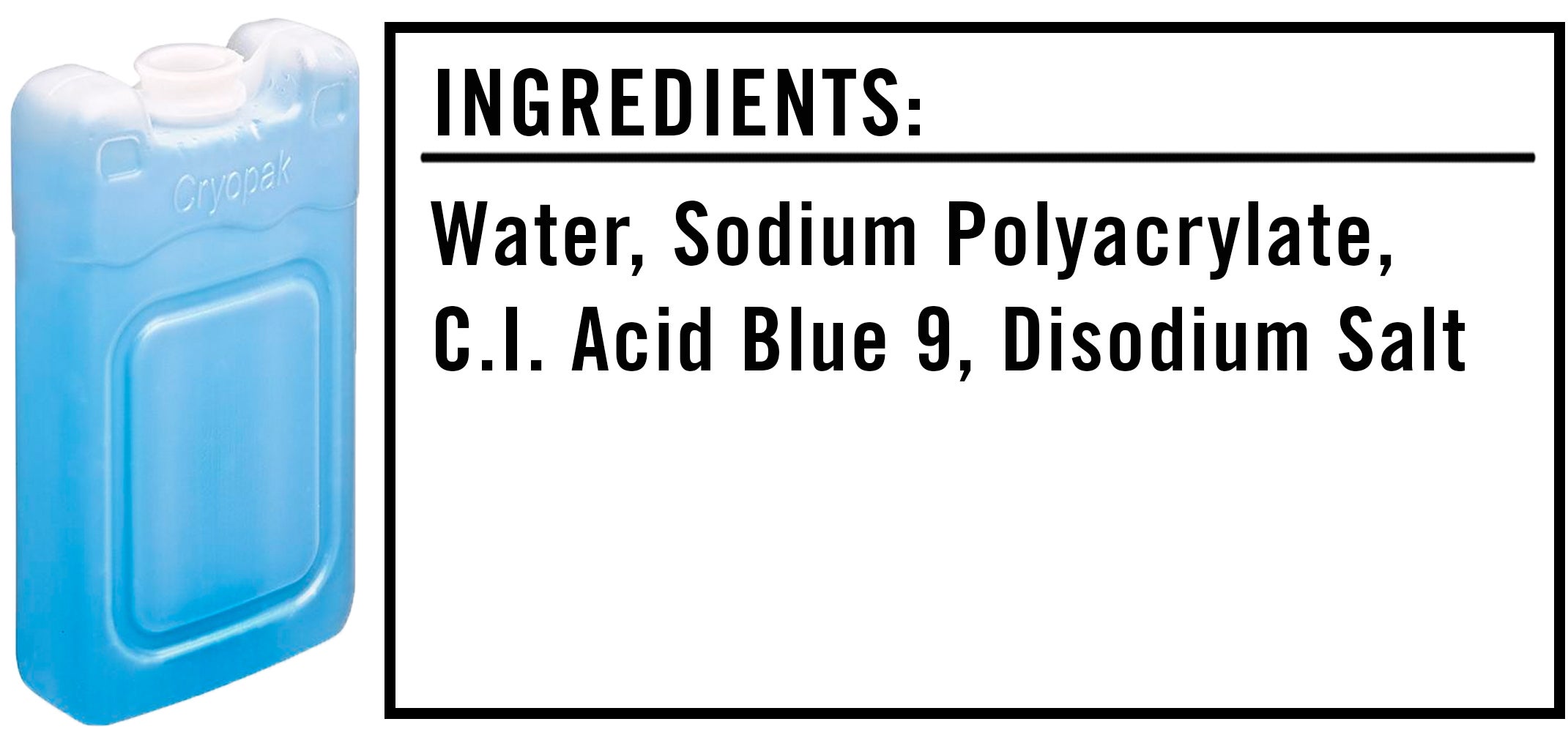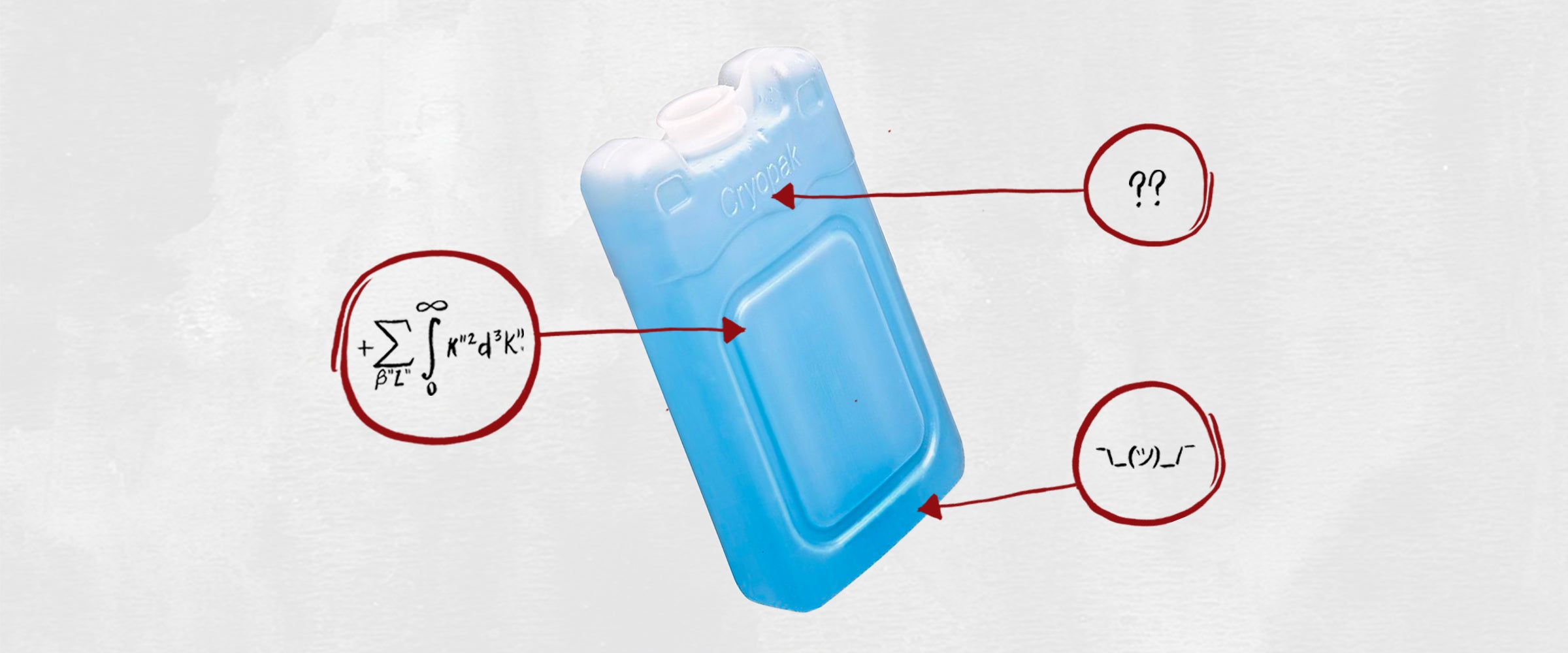We’re often told that you should never eat anything (or put anything on your body) if you don’t recognize everything on the ingredients list. But since most of us have no idea what xanthan gum or potassium benzoate are — or more importantly, what they’re doing to our bodies — we’re decoding the ingredients in the many things Americans put in (and on, or near) themselves.
This edition: ULINE Ice Packs, which are filled with three separate ingredients that we’ve broken down in the exact order they appear online.
A quick note before we begin: Pretty much all ice packs are the same (those single-use ones aside), and they can be used for various purposes, including keeping your cooler, well, cool, as well as soothing your sore head after your finish all the beers in that cooler and proceed to stumble headfirst into drywall. Whatever you’re using it for, here’s what’s in them.

The Ingredients
1) Water: This ice pack contains at least 98 percent water. If you had hoped to be surprised by the first entry on this list, I apologize.
2) Sodium Polyacrylate: Sodium polyacrylate, also known as waterlock, is a super-absorbent polymer, and it can absorb up to 800 times its mass in water, which explains why this ingredient is particularly common in diapers. In ice packs, sodium polyacrylate also acts as a thickener, since it becomes a gel-like substance when wet, which basically helps to create an incredibly dense ice cube thing that stays cool for a good while. This ingredient has been deemed safe by the Cosmetic Ingredient Review Expert Panel, however, I can’t recommend eating it.
3) C.I. Acid Blue 9, Disodium Salt: This is what gives these ice packs their appetizing blue color. Again, there’s no reason why you should ever eat an ice pack, but just for future reference, as physician and biochemist Cate Shanahan, author of Deep Nutrition: Why Your Genes Need Traditional Food, explained during our analysis of Doritos, studies arguing the dangers of artificial colors in our food are a bit flawed:
“I’ve always been of the opinion that studies claiming artificial colors can cause cancer are irrelevant because [in the studies] they use really high amounts of the artificial colors — like, a million times more than you’d ever get [in your] food [throughout your lifetime].”
All in all, the average person’s liver should be able to break down whatever minuscule amount of artificial coloring we consume with food, but definitely not with ice packs, because Goddamnit, stop thinking about eating them.
The Takeaway
All I have to say is that sodium polyacrylate is cool as hell, and so is all the beer situated next to the various packs in my cooler — ice, ice cool, baby.

